Practical strategies to boost learning, reduce teacher admin, and build AI-ready students.
AI in education is no longer an abstract future idea. From tutors that diagnose gaps in minutes to analytics that spot disengagement before grades fall, AI tools are already reshaping how teachers teach and how learners learn. The promise is simple: better learning, faster, and at scale. The reality is complicated: outcomes vary by design, context and implementation. This article maps the evidence, gives nine practical ways AI will change classrooms by 2030, and lays out an actionable roadmap for school and university leaders.
Promise to you: read this and you will have a realistic, evidence-informed plan to pilot AI tools that can improve learning without exposing students or teachers to unnecessary risk.
The current evidence snapshot (what the research actually says)
There is growing empirical evidence that well-designed AI tutoring and personalized systems can boost learning, sometimes substantially. Recent randomized trials and meta-analyses report improvements in learning efficiency and student engagement when AI tutors follow sound pedagogical principles. For example, multiple 2024–2025 studies found AI tutoring systems improved learning gains and engagement compared with traditional classroom-only approaches. (Nature)
At the same time, systematic reviews caution the evidence base is uneven: many studies are small, single-site, short-term, or conducted in narrow contexts. Reviews call for more rigorous, large-scale trials and better reporting on equity, privacy and long-term outcomes. In short, AI works in certain designs and situations, but it is not a panacea and needs careful evaluation. (PMC)
Policy bodies and global organisations are treating AI in education as a strategic priority — offering guidance on adoption, equity and safety. UNESCO, the OECD and the World Economic Forum have published frameworks or guidance to help education systems balance opportunity and risk. (UNESCO)
Nine ways AI will transform learning by 2030
Below are the concrete transformations to expect, with practical implications and examples.
1. Personalized learning at scale
What changes: AI systems will adapt content, pace and difficulty to each learner’s needs in near real time. That means customised learning paths for students who need remediation and rapid progress for those who are ready to advance.
Why it matters: personalization addresses the core mismatch between one-size-fits-all instruction and diverse learner needs. Controlled studies show AI-assisted personalization can increase mastery and efficiency when aligned with good pedagogy. (Nature)
Implementation note: start with narrow, high-value use cases — for example, math practice or reading fluency — and measure gains before scaling.

Image placeholder: Screenshot of an adaptive learning dashboard.
Alt text: Adaptive learning dashboard showing AI in education personalised lesson paths.
2. Intelligent tutoring systems that accelerate mastery
What changes: advanced tutoring systems will provide Socratic prompts, hints, worked examples and scaffolded practice that mirror one-to-one tutoring. Several recent trials found students using AI tutors learned more in less time than peers in traditional classes. (Nature)
Why it matters: one-to-one tutoring is one of the most proven interventions for learning gains. AI makes a version of this affordable and scalable.
Implementation note: pair AI tutors with human oversight — teachers should interpret tutor reports and intervene where needed.
Image placeholder: Simulated conversation between a student and an AI tutor.
Alt text: Student interacting with AI tutor showing how AI in education provides step-by-step guidance.
3. Real-time formative assessment and analytics
What changes: AI will analyse student responses, classroom dialogue, and digital footprints to provide teachers with actionable insights: who is struggling, which misconceptions are common, and which instructional strategies are working. Research shows LLMs and analytics tools can analyse classroom interactions reliably enough to inform teacher decisions. (PMC)
Why it matters: teachers often lack timely, granular data. Better formative feedback enables targeted interventions before gaps widen.
Implementation note: ensure dashboards prioritise a small set of high-signal indicators to avoid data overload.

Image placeholder: Teacher dashboard showing class mastery heatmap.
Alt text: Teacher dashboard heatmap illustrating AI in education formative insights.
4. Automating teacher admin and freeing time for instruction
What changes: AI will automate routine tasks such as grading objective items, drafting report comments, scheduling, and creating differentiated materials from a single lesson plan. This reduces teacher workload and creates time for high-impact activities like coaching and mentoring. Evidence shows AI assistants can meaningfully reduce educators’ admin load. (VCU Scholars Compass)
Why it matters: time is the scarcest resource for teachers. Automating low-value tasks amplifies teacher impact.
Implementation note: pilot admin automation with clear privacy safeguards and teacher opt-in.
5. New assessment models and credentials
What changes: AI will support competency-based assessment, portfolio evaluation and automated—but explainable—scoring for complex tasks like essays and project work. Expect micro-credentials and modular certifications that map to mastery units rather than seat-time.
Why it matters: shifting to competency measures better signals real-world skills and supports lifelong learning.
Implementation note: validate automated scoring against human raters and maintain appeals pathways.
6. Supporting wellbeing and student services
What changes: conversational agents can offer 24/7 triage for wellbeing, provide study coaching, and connect students to human counsellors when flags indicate risk. Studies suggest AI can increase access to mental health supports, but they caution about boundaries and accuracy. (PMC)
Why it matters: access to support services affects retention and learning outcomes.
Implementation note: conversational agents should be explicitly framed as assistants, not replacements for licensed professionals.
Image placeholder: Student using a wellbeing chatbot on a phone.
Alt text: Student chatting with wellbeing assistant showing responsible AI in education use.
7. Enabling teacher development and coaching
What changes: AI will analyse teaching practice from recorded lessons to give targeted coaching prompts — for example, suggestions on questioning techniques, wait time, or formative checks. Research into classroom-analysis models shows promise for diagnostic support. (PMC)
Why it matters: continuous professional development becomes actionable and personalised.
Implementation note: teachers must control recording and consent; use anonymised analytics when possible.
8. Increasing access, but creating new equity risks
What changes: AI-powered platforms can deliver quality resources to underserved areas where skilled teachers are scarce. At the same time, unequal access to devices, connectivity, or high-quality models may widen gaps. Policy frameworks from UNESCO and OECD stress managing these trade-offs. (UNESCO)
Why it matters: the net impact on equity depends on procurement, infrastructure and governance choices.
Implementation note: pair tech rollout with connectivity plans, teacher training and low-bandwidth alternatives.
9. Rethinking curriculum to teach human+AI skills
What changes: curricula will include AI literacy, prompt fluency, critical evaluation of AI outputs, and ethics — not just how to use tools but how to collaborate with them ethically. The World Economic Forum and national guidance are already pushing AI literacy as core skills. (World Economic Forum)
Why it matters: graduates need to work with AI, not only about it.
Implementation note: start with modular AI literacy units that integrate into existing subjects rather than adding a separate course.
Practical roadmap: what schools should do this year, next year, and by 2030
Short checklist you can act on immediately, organised by timeline.
This year (0–12 months)
- Identify 1–2 high-value pilot use cases (e.g., adaptive math practice, grading automation).
- Run a privacy and ethics review for any vendor pilot; require data minimisation and local control.
- Train a small cohort of teachers as “AI champions” to trial tools and document workflows.
- Put simple success metrics in place: learning gains, teacher time saved, student satisfaction.
Next year (12–24 months)
- Scale pilots that show measurable gains with a controlled rollout.
- Invest in teacher professional development focused on interpreting AI insights and prompt design.
- Build procurement agreements that include model transparency, data portability, and audit rights.
- Start integrating AI literacy into at least one subject area.
By 2030 (strategic)
- Redesign assessments toward competencies supported by AI analytics.
- Deploy blended human-AI coaching models for teacher development.
- Enshrine governance frameworks for ethical AI use across the district or institution.
- Ensure equitable access by funding devices, connectivity and local compute options.
Risks, ethics and governance — the guardrails we must build
AI’s benefits are real, but the risks are significant and must be planned for:
- Privacy and data protection — student data is sensitive. Use data minimisation, local storage where possible, and clear consent policies. The U.S. Department of Education and UNESCO offer guidance on safe deployment. (U.S. Department of Education)
- Bias and fairness — models trained on biased data can amplify inequalities. Validate tools across demographic groups.
- Explainability and trust — educators need explainable outputs. A black box score is less useful than a clear diagnostic with recommended actions. Stanford’s work on classroom LLMs highlights trade-offs between model size, cost and explainability. (Stanford HAI)
- Teacher deskilling and overreliance — AI should augment, not replace, pedagogical judgment. Design workflows where humans make final calls.
- Regulatory and procurement risks — insist on contracts that include model audits, security certifications and exit clauses.
Actionable governance checklist:
- Privacy impact assessment before procurement.
- Equity impact assessment for each pilot.
- Teacher-led ethics board to review use cases.
- Annual audit of learning outcomes and fairness metrics.
Tools and resources (starter list)
- UNESCO AI in Education guidance. (UNESCO)
- OECD Trends Shaping Education 2025. (OECD)
- Stanford HAI overview of language models in classrooms. (Stanford HAI)
- Evidence summaries and meta-analyses on AI tutoring and learning outcomes. (Nature)
Internal link placeholders:
- Internal article: How to run an edtech pilot step-by-step
- Internal guide: Teacher privacy and consent checklist
- Internal resource: Curriculum design for AI literacy
External DoFollow links (trusted):
AI in education will change how we teach, assess and support learners. The most likely near-term gains come from focused use cases: adaptive practice, intelligent tutors, formative analytics and workload automation. But success depends on design, human oversight, and governance. Start small, measure rigorously, protect students, and scale what demonstrably improves learning.
If you lead a school or faculty, pick one pilot from this article and run a three-month trial with clear success metrics. If you are a teacher, experiment with one AI tool and report back what worked and what didn’t. Share your findings in the comments below so we can learn faster together.
FAQ
- Does AI in education actually improve learning outcomes?
“Research shows AI can improve outcomes in targeted cases, especially with adaptive tutors and formative feedback. However, evidence varies and large-scale, long-term trials are still needed.”
- Are AI tutors safe for children?
AI tutors can be safe if they operate under strict privacy, consent and supervision rules. They should not replace human judgement for safeguarding or clinical decisions.
- How can schools protect student data when using AI tools?
Use data minimisation, on-premises or local storage when possible, strict vendor contracts, and clear consent processes for students and parents.
- Will AI replace teachers?
AI will automate routine tasks and augment instruction, but teachers remain essential for pedagogical judgement, motivation and socio-emotional support.
- What skills should students learn to work with AI?
AI literacy, prompt design, critical evaluation of AI outputs, data literacy and ethics are core skills to include in curricula.
Five most important claims and supporting sources (load-bearing citations)
- AI tutoring systems have shown measurable learning gains in randomized trials. (Nature)
- Systematic reviews find the current evidence base is mixed and call for larger, rigorous studies. (PMC)
- Policy organisations advise structured governance and equity safeguards for AI in education. (UNESCO)
- LLMs and classroom analytics can analyse teaching and dialogue but raise privacy and cost concerns. (PMC)
- AI can reduce teacher administrative workload and reallocate time to high-impact instruction if implemented correctly. (VCU Scholars Compass)












Leave a Reply